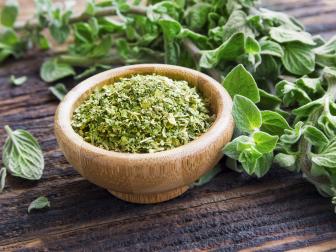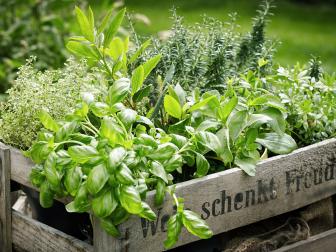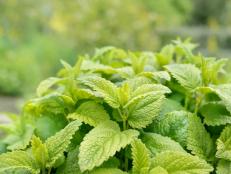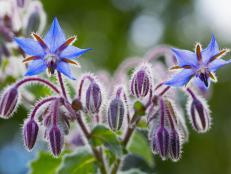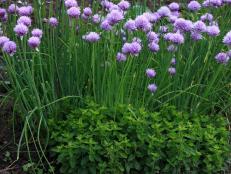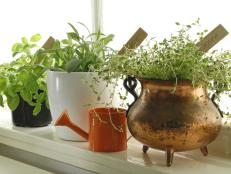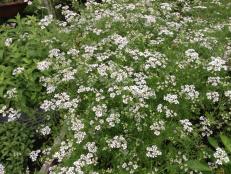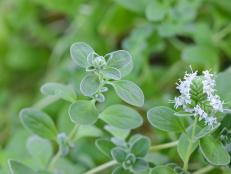Planting, Growing and Harvesting Stevia
Stevia — also called sweetleaf — is an easy-to-grow annual herb that is commonly harvested to use as a natural, calorie-free sweetener. Stevia’s pretty green leaves and tiny white flowers make a wonderful addition to any herb or container garden.

Sweetleaf (aka Stevia) is an easy-to-grow annual herb that makes an interesting addition to potagers, herb gardens, youth gardens and the flower border. In exchange for good drainage, ample sun and plenty of moisture, Stevia rewards gardeners with many sugar-sweet, delicious leaves.

casa.da.photo
Sweeten up your herb garden by growing sweetleaf.
Botanical Name: Stevia rebaudiana
Common Name: Sweetleaf
Bloom Time: Summer
Light Needs: Full sun to light shade
Hardiness Zones: Zones 9 to 11
Height: 2 feet
Growth Rate: Medium
Gardeners who are mindful of their sugar consumption may be familiar with the names “Stevia” and “sweetleaf.” This species is native to Paraguay and parts of Brazil in South America, where it has been used as a sweetener for centuries. While the leaves may taste even sweeter than sugar, unlike sugar derived from sugar cane or sugar beets, Stevia doesn’t have any calories or cause dental cavities.
Stevia grows to a 2-foot-tall, 2-foot-wide mound of small, elliptical green leaves. Sweetleaf may produce delicate clusters of tiny white flowers that can be trimmed off to encourage sweeter-tasting leaves. While sweetleaf is reliably perennial in warm, tropical areas, it’s generally grown as a tender perennial or an annual plant in more temperate regions.

YuRi Photolife
The sweetleaf plant produces tiny white flowers.
How to Grow Stevia
Stevia grows best in full sun, but it tolerates part shade. Generally, plants grown in sunnier spots tend to have stronger stems that are less prone to flopping over neighboring plants. Sweetleaf needs consistent soil moisture to keep from flagging in the garden, but it is also susceptible to root rot when grown in poorly drained conditions. Gardeners with soggy soils can amend with compost, grow in pots or build a raised garden bed to improve soil drainage. Fortunately, Stevia has similar growing requirements as many other traditional herbs, fruits and veggies, as well as annual bedding plants, which means it should grow happily in most conventional garden beds.
Stevia might grow back from its roots in USDA Hardiness Zones 8 and 9, depending on winter conditions. Gardeners below Zone 10 can overwinter Stevia by growing as a houseplant or saving cuttings, or they can grow as an annual herb. Sweetleaf plants are usually available from garden centers and plant nurseries in the spring, but it is also easy to grow from seed or stem cuttings.
How to Plant a Kitchen Herb Garden
Herbs are easy to grow, they don’t take up a lot of space and they are a healthy way to add more flavor to your cooking. Whether you’re a beginning gardener or looking to elevate your culinary skills, an herb garden is the way to go.
How to Grow Stevia From Seed
When growing sweetleaf from seed, it’s best to start seedlings indoors about six weeks before the average last frost in your region. Fill a pot or tray with moist potting mix, gently scatter the seeds over the soil surface, then lightly cover the seeds with more potting mix. Place the container on a seedling heat mat to speed up germination. Once the seedlings emerge, make sure they get plenty of light, either from a sunny window or a grow light.
After a few weeks, the Stevia seedlings should have two pairs of leaves — one pair of rounded “seed leaves” and a second pair of “true leaves”. When Stevia seedlings have their true leaves, they’re ready to pot on into their own small container. Tenderly lift the roots from the soil using a pencil or popsicle stick while grasping one of the leaves. Gently press the seedling into the soil in its new pot and add water until it drips out of the drainage holes at the bottom of the container.

Burpee
A favorite among dieters, stevia is super easy to grow as an annual in Zones 9 and cooler.
How to Grow Stevia From Cuttings
Stevia is also relatively easy to grow from stem cuttings. Use a clean and sharp pair of hand pruners to collect 3- or 4-inch sections of stems from a healthy plant. Remove any leaves from the bottom three-quarters of the stem section, and place the bottom half of the stem cutting in a glass of water.
You can also start stem cuttings in a potting mixture instead of water. Simply dip the bottom of the stem cutting in rooting hormone powder (which is available from many garden centers and plant nurseries), then push the bottom of the stem into the moist potting soil. Cover the pot with a clear plastic bag to help maintain a high level of humidity while the stems produce new roots.
With either technique, the stem cuttings should develop roots in one to two months, at which point your new plants will be ready to pot up. Gently firm the rooted cutting into the potting mixture, then water well while the plant gets established.

National Garden Bureau at ngb.org
Stevia makes a wonderful companion to other tasty herbs. Pictured above are (clockwise from bottom center) lemon thyme, Mojito mint, Scarlet pineapple sage, ‘Kasar’ basil and sweetleaf stevia.
How to Harvest and Preserve Stevia
Stevia leaves can be eaten fresh from the plant, although their sweetness increases when the leaves are dried. To preserve your own sweetleaf leaves, simply snip a bundle of healthy stems and hang upside down in a warm, dry spot that has good air circulation. Once the leaves are dry, they can be stripped from the stems, pulsed in a coffee grinder or food processor and stored in an air-tight container.
According to the Herb Society of America, you can also preserve sweetleaf as a syrup. Collect 1/4 cup of crushed fresh leaves. Add 1 cup of warm water and allow to steep over 24 hours. Strain the leaves and store in the fridge until you’re ready to use.
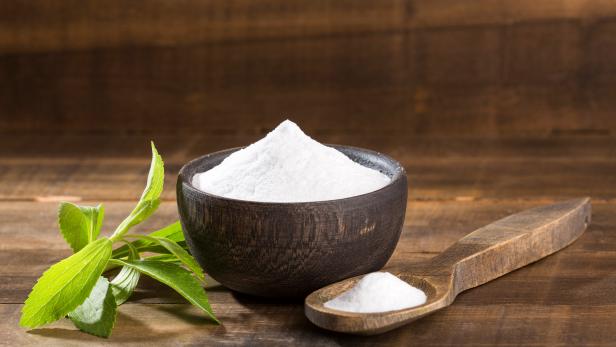
Luis Echeverri Urrea
Stevia can be used fresh or dried and ground to sweeten food or beverages.

.-Battle-on-the-Beach-courtesy-of-HGTV.-.jpg.rend.hgtvcom.196.196.suffix/1714761529029.jpeg)





